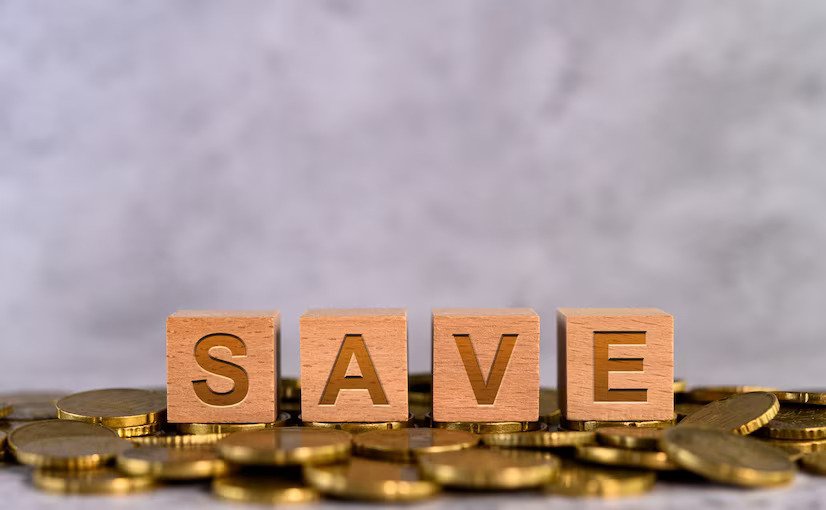The traditional investment model is a flawed system, an old dinosaur that needs to evolve.
It’s time we reevaluate the conventional wisdom surrounding investments, which is overly fixated on businesses that are already successful and tragically shortsighted when it comes to companies teetering on the edge of growth.
In traditional investing, there’s an unspoken rule: the golden ticket to getting funding isn’t innovation or potential but a proven track record of making at least $10 million. This is a narrow-minded approach that does nothing more than stifle the very heart of our economy—small businesses.
Introducing sweat equity
Eight-figure entrepreneur, growth mentor, and innovative investor Tamara Loehr (www.tamaraloehr.com) bring a breath of fresh air to the world of investing. She’s not your usual investor who waits for businesses to reach millions before swooping in.
Instead, she actively seeks out businesses with potential and partners with them by investing her expertise and services to help them achieve growth and significant returns.
She calls this sweat equity investment, a unique model that’s a game-changer for businesses. Tamara doesn’t merely provide financial backup; she rolls up her sleeves and brings a wealth of expertise, strategic vision, and creative solutions to the table.
It’s a holistic approach that not only increases the likelihood of success for the businesses she invests in but also amplifies the potential returns for both the entrepreneur and herself.
By focusing on small businesses and collaborating with them closely, Tamara is paving the way for a new era of investing that champions small businesses and fosters a more inclusive and dynamic business landscape.
What is sweat equity?
Sweat equity is a unique investment model where investors exchange their expertise, resources, and time for equity in a business. Tamara came up with this innovative approach to investing after seeing how traditional methods often left entrepreneurs struggling to repay loans or lose equity in their businesses.
In this model, instead of investing cash, investors offer services to companies in exchange for a stake in their business. It’s a win-win situation for both parties, as businesses receive the much-needed resources to grow, while investors gain a stake in a growing business.
Why sweat equity works

Sweat equity investment offers a unique and innovative approach to investing that can provide a range of benefits for both investors and entrepreneurs. If you’re a creative investor looking to explore new investment opportunities, sweat equity investment is worth considering.
Entrepreneurial access to expertise
One of the key advantages of the sweat equity investment model is the access to expertise it provides to entrepreneurs. Founders have a strong vision and passion for their business but may lack skills or experience in areas such as finance, marketing, or operations. By partnering with a sweat equity investor with expertise in these areas, businesses can leverage this knowledge and experience so they can succeed faster.
Sweat equity investors like Tamara are experienced business owners who have a track record of building and scaling successful companies. They are looking for new investment opportunities that align with their expertise and interests and are willing to offer their skills in exchange for equity. This type of partnership allows entrepreneurs to access the expertise they may not be able to afford to hire on their own.
Entrepreneurs also gain access to an investor’s connections. These investors often have a vast network of contacts that can be beneficial to the business, including suppliers, customers, and other professionals in the industry.
Sweat equity investors also have a vested interest in the success of their investments. They are not just passive investors but active partners who are invested in helping their partners achieve their goals. This means that they are likely to be more involved in the day-to-day operations of the business, offering guidance and advice as needed.
Capital conservation
Instead of pouring all their capital into hiring consultants or buying equipment, businesses exchange equity for the expertise and resources they need. This approach can be particularly useful for startups and small businesses that may have limited financial resources.
When entrepreneurs team up with sweat equity investors, they’re essentially receiving support and guidance in exchange for equity. By doing so, they’re preserving capital and freeing up funds that can be reinvested in other areas of their business. This can be a game-changer, especially in the early stages of the business when cash flow is often a major challenge.
The value of sweat equity extends far beyond the immediate financial gain. Entrepreneurs gain access to experts who are invested in the success of their business and who can help build and grow the company over time. By leveraging sweat equity, they’re setting themselves up for long-term success and sustainability.
Risk mitigation
When it comes to investing, risk is always a factor to consider. However, the risk can be mitigated with sweat equity investments. Investors and entrepreneurs share the risks of a sweat equity investment, thereby reducing the financial burden of starting, growing, and investing in a business.
This shared-risk approach provides a safety net for entrepreneurs who may not have the financial resources to weather unexpected expenses or a downturn in the business.
And because the investor is a partner and has a vested interest in the success of the business, they are more willing to provide support during difficult times.
Overall, the risk-sharing associated with the sweat equity model can help entrepreneurs avoid bankruptcy or failure and increase their chances of success.
Long-term commitment
One of the most compelling reasons for exploring sweat equity investment is the long-term commitment it demands from both the entrepreneur and the investor.
In a traditional investment model, investors are primarily focused on achieving financial returns and may not have a vested interest in the long-term success of the business.
With sweat equity investment, both parties have a shared interest in the success of the business. The investor is contributing not just financial resources, but also expertise and guidance, which makes them invested in the company’s future. This commitment from the investor can provide stability and security for the entrepreneur, who has a partner who is as committed to the business’s success as they are.
This shared commitment also means that both parties are willing to work together through challenges and changes, adapting and evolving as needed. In essence, sweat equity investment creates a partnership based on a mutual commitment to the business’s long-term success.
This long-term commitment is especially valuable for creative investors who are looking to invest in innovative, high-potential businesses. They have the opportunity to be part of something they believe in and help guide the company toward its full potential.
Credibility booster
Sweat equity investment is not just a way to conserve capital or mitigate risk, but also a chance to enhance an entrepreneur’s credibility. Customers and investors are more likely to do business with a company that has an experienced partner behind it.
This type of partnership can lead to a reputation boost that ultimately results in more opportunities for growth and expansion.
Aligned goals
With sweat equity, the investor becomes a stakeholder in the business and has a personal interest in seeing it succeed. This shared interest ensures that both parties are working towards the same objectives and helps create a more collaborative and supportive relationship.
When investors are only focused on financial returns, there can often be a misalignment of priorities with the entrepreneur. This misalignment can lead to conflict, mistrust, and a breakdown in the working relationship. With sweat equity, however, both parties have a vested interest in the success of the business. This shared interest can foster a strong sense of trust and cooperation between the two parties.
Also, when the investor is invested in the long-term success of the business, they are more likely to stick around and provide ongoing support and guidance to the entrepreneur. This can help the entrepreneur navigate the challenges of growing a business and accelerate the path to success.
Value-added mentorship
One of the key benefits of the sweat equity investment model is the personalized mentorship that investors inevitably provide to entrepreneurs.
For many entrepreneurs, starting a business can be overwhelming, and they may lack the necessary experience in certain areas of the business. This is where mentoring by a sweat equity investor becomes crucial. With their guidance and support, the entrepreneur can avoid costly mistakes and take the right steps to grow their business.
The mentorship also provides entrepreneurs with an outside perspective and a fresh set of eyes. This can help identify areas of improvement and opportunities for growth that may have gone unnoticed. Through regular communication, investors can hold entrepreneurs accountable and help them stay on track with their goals.
Ultimately, mentoring is a win-win situation for both parties. The entrepreneur gains valuable insights and guidance, while the investor can contribute to the growth and success of the business. With the right mentorship, entrepreneurs can take their businesses to the next level and achieve long-term success.
Takeaway
Sweat equity is a game-changing investment model that provides a host of benefits to both investors and entrepreneurs.
Tamara’s approach, which focuses on creating a long-term relationship between the investor and the entrepreneur, allows for a unique level of collaboration and expertise-sharing that traditional investment models cannot provide.
Not only does sweat equity offer a way for entrepreneurs to conserve capital and mitigate risk, but it also leads to an alignment of goals between business and investor.
As an investor, it’s essential to explore this innovative approach to investing and consider incorporating it into your investment strategy. By doing so, you’re not only investing in a business but in the potential growth and success of the entrepreneur themselves.
Read Also:






















